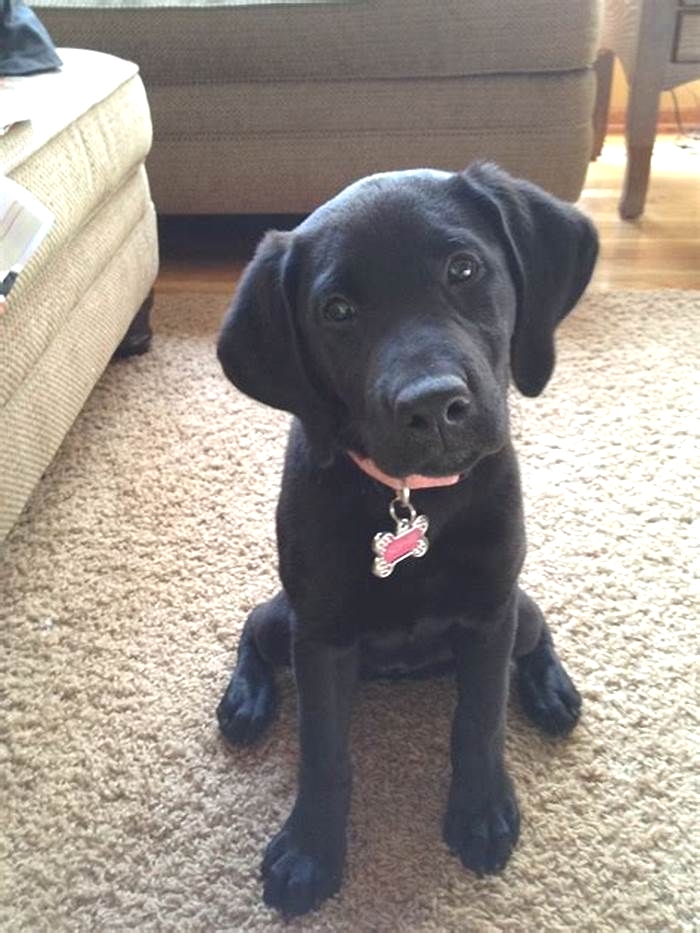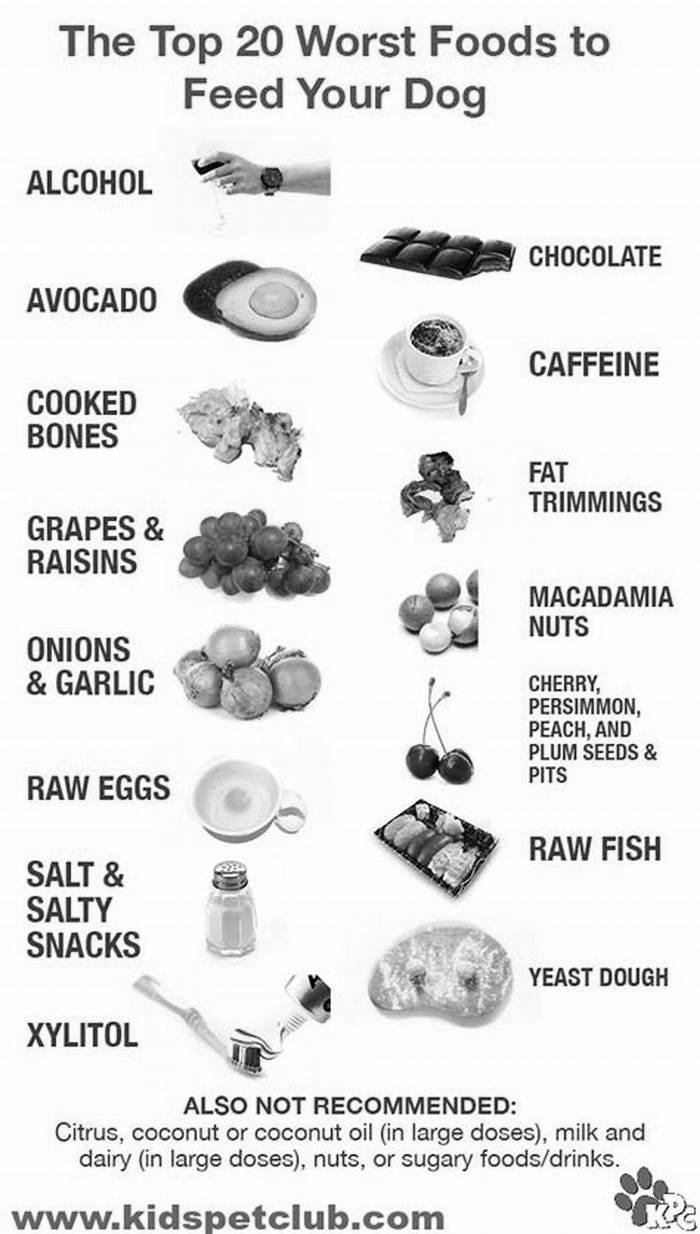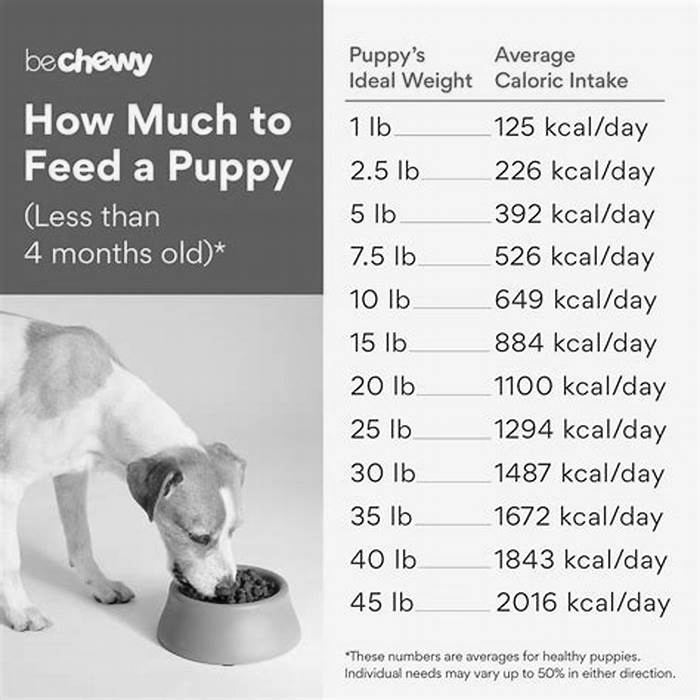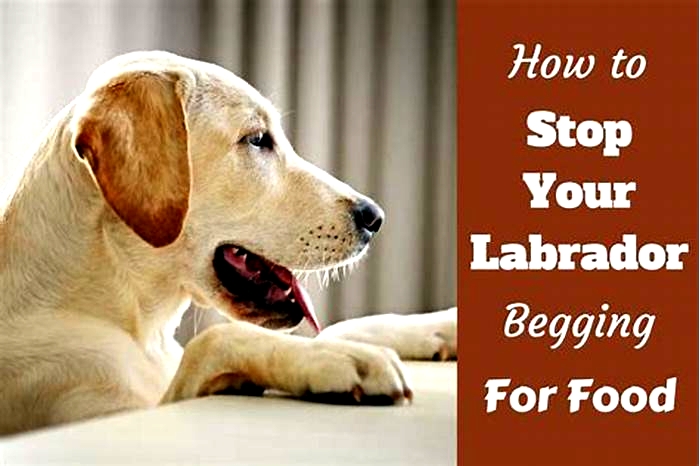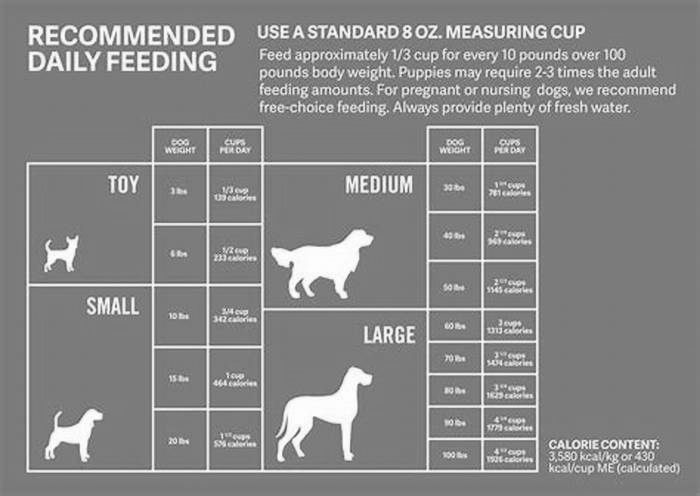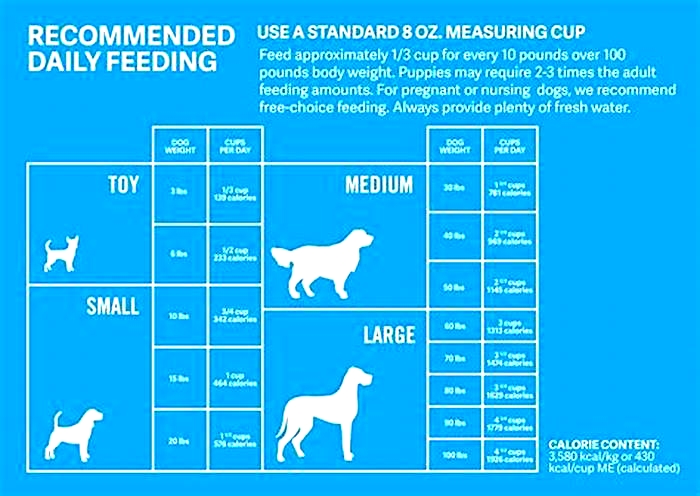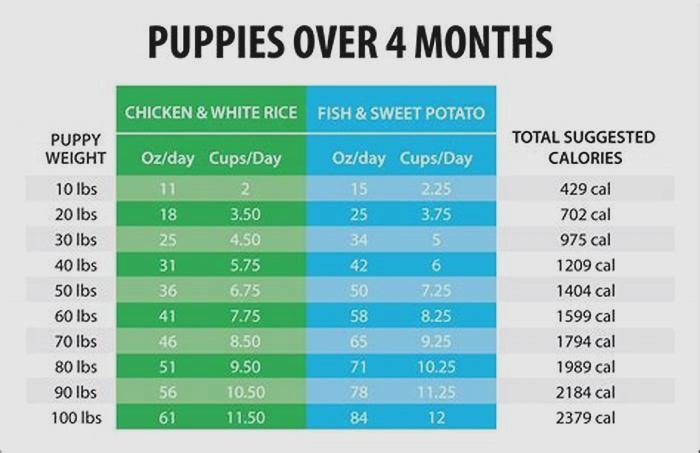What food is best for a Labrador puppy
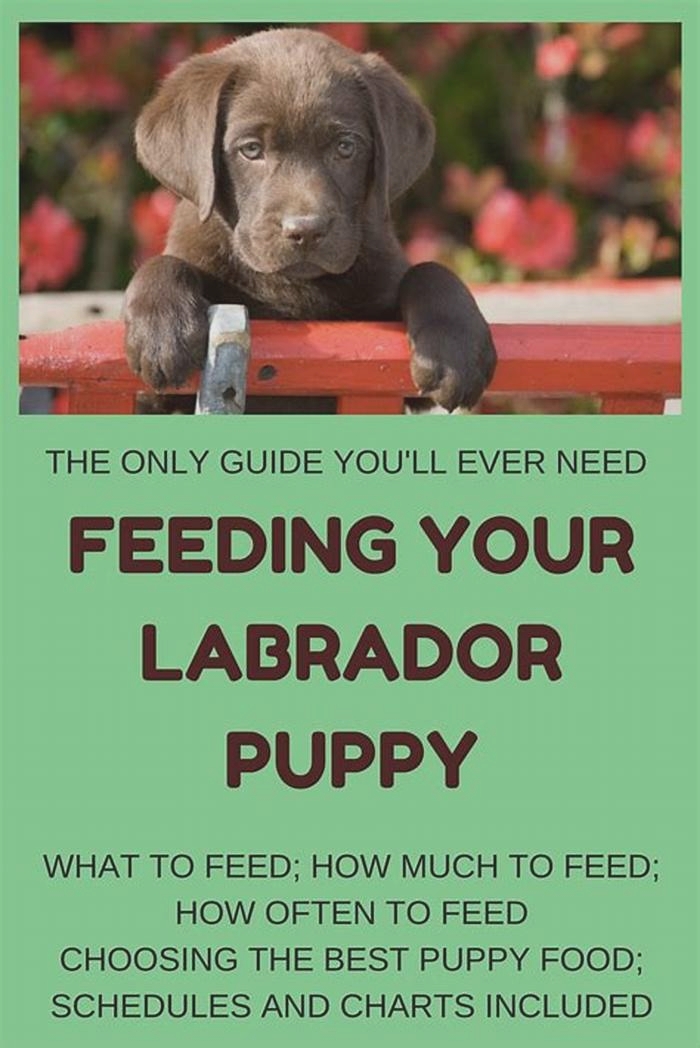
What To Feed a Labrador Puppy (Best Options)
Ultimate Labrador Puppy Food Guide: Feeding Tips and Best Choices
When it comes to feeding your furry little friend, a Labrador puppy, youre not just filling a bowl; youre setting the stage for a lifetime of health and happiness.
Your Lab's vibrant energy, shiny coat, and bright eyes all start with what's in their food dish.
Navigating the nutritional needs of your Lab puppy doesn't have to be a trek through the unknown.
Let's dive in and explore the choices and tips that will keep your puppy's tail wagging meal after meal!
Age-Appropriate Diet
Labrador puppies have unique nutritional needs, particularly during their early stages of growth and development.
It's essential to choose high-quality puppy food designed specifically for large breeds like Labradors.
These formulations ensure that your puppy receives the right balance of nutrients, including protein and fat, which are crucial for their rapid growth and overall health.
Opting for a puppy-specific diet sets the foundation for a healthy and robust Labrador.
Portion Control
Lab puppies have a hearty appetite, but it's crucial to prevent them from overeating, as this can lead to obesity and related health issues later in life.
To maintain an ideal weight, use a feeding chart provided by your veterinarian or the puppy food manufacturer.
This chart takes into account your puppy's age and size, helping you determine the appropriate portion sizes for each meal.
Scheduled Meals
Establishing a regular feeding schedule is beneficial for both your Labrador puppy's health and house training. Aim to feed your puppy at the same times each day, creating a consistent routine that allows you to anticipate their bathroom needs.
For young Labradors, three to four meals per day are ideal, gradually reducing the frequency as they grow and their stomach capacity increases.
A structured feeding routine helps your puppy thrive and adapt to a predictable daily schedule.
Fresh Water
Adequate hydration is vital for Labradors, given their energetic nature and playfulness. Ensure that clean, fresh water is always available for your puppy.
Labradors can become dehydrated quickly, especially after physical activity or during warmer months.
Regularly check and refill their water bowl to keep them well-hydrated. Proper hydration supports their overall health and helps them stay active and happy.
Avoid Human Foods
While it may be tempting to share your meals with your Labrador puppy, many human foods can be harmful to them. Some foods may lead to allergies, digestive issues, or even serious health problems.
It's essential to stick to puppy-formulated foods recommended by your veterinarian or a trusted pet nutritionist.
Avoid offering table scraps or human foods to ensure your puppy's diet remains safe and appropriate for their unique nutritional needs.
Monitor Growth
Keeping track of your Lab's weight and growth can help you adjust their diet as needed. Regular vet visits are part of this monitoring to ensure their development is on track.
Gradual Food Changes
When it's time to transition your Labrador puppy from puppy food to adult dog food, it's essential to do so gradually. Sudden dietary changes can lead to digestive upset and discomfort. To make the transition smoother, mix a small portion of the new adult food with their current puppy food.
Gradually increase the proportion of adult food while decreasing the puppy food over about a week. This gradual transition minimizes the chances of digestive issues and ensures your Labrador adapts well to their new diet.
Treats in Moderation
Treats are a valuable tool for training and rewarding your Labrador puppy, but it's essential to use them in moderation. Excessive treats can contribute to weight gain and an imbalanced diet.
As a general guideline, treats should constitute less than 10% of your puppy's daily caloric intake. Choose healthy, puppy-friendly treats that align with their dietary requirements.
This practice helps maintain a balanced diet while still allowing you to reinforce positive behavior and bonding with your Labrador.
Regularly Clean Food and Water Bowls
Cleanliness is vital when it comes to your Labrador puppy's food and water bowls. Bacteria can thrive in dirty dishes, potentially leading to health issues for your puppy.
Make it a habit to wash your puppy's food and water bowls daily with hot, soapy water to ensure they remain clean and free from harmful contaminants.
This simple yet essential task contributes to your puppy's overall health and well-being by providing a safe and hygienic dining experience.
Consider Consulting with a Veterinarian for Dietary Guidance
A vet can provide personalized dietary guidance for your puppy, taking into account their specific nutritional requirements, health conditions, and even preferences.
Remember, every Labrador puppy is unique, and while these tips are a great general guide, your puppy's individual needs might vary.
Keep an eye on their response to the diet, and don't hesitate to get professional advice when needed. Feeding your Lab well isn't just about today's meal; it's about a lifetime of well-being.
Best Food Choices for Lab Puppies
When you bring a Labrador puppy into your life, choosing the right food is as critical as teaching them to sit or stay. Your Lab's growth, development, and overall health are heavily impacted by what they munch on.
Let's dive into the top food choices tailored for your Lab puppy, focusing on high-quality kibble that supports their rapid growth without going overboard on fillers and unnecessary grains.
1. Royal Canin Labrador Retriever Puppy
Royal Canin Lab Puppy Dry Food has crafted a formula specifically for Labrador puppies, ensuring a balance of proteins, fats, and carbohydrates to support their lively energy levels. It includes:
- High-quality protein (including chicken) for muscle development
- An assortment of vitamins and minerals to boost your pup's immune system
2. Hill's Science Diet Puppy Large Breed
Hills Science Diet Puppy Dog Food prioritizes the well-being of larger breeds like Labs, focusing on:
- Optimal levels of calcium for controlled bone growth
- High-quality chicken meal as a primary source of protein
3. Purina Pro Plan Focus Puppy Large Breed
Purina Pro is known for its scientific approach to pet nutrition and offers:
- A blend of high-quality protein, including chicken, for your puppys muscle development
- DHA-rich fish oil for brain and vision health
4. Wellness Complete Health Puppy
The Wellness Complete Health Puppy Food is a well-rounded choice that combines natural ingredients for a balanced diet, featuring:
- Deboned chicken and salmon meal for a protein-packed punch
- Grains like oats and barley for sustained energy release
5. Blue Buffalo Life Protection Formula Puppy
Blue Buffalo Life Protection Formula Puppy Food offers a grain-inclusive option loaded with antioxidants, comprising:
- Real meat is the first ingredient to cater to your Lab's protein needs
- 'LifeSource Bits' - a blend of antioxidants, vitamins, and minerals
6. Merrick Grain-Free Puppy Recipe Dry Food
For those opting for a grain-free diet for their pups, Merrick Grain-Free Dry Food provides:
- A poultry-rich formula with 60% protein and healthy fats; 40% produce, fiber, vitamins, minerals, and other natural ingredients
- DHA for healthy brain development
7. Nutro Wholesome Essentials Large Breed Puppy
Nutro Wholesome Essentials Large Breed Puppy understands the specific needs of large-breed puppies, and their formula reflects this understanding by featuring farm-raised chicken as the primary protein source.
This high-quality protein supports muscle development, providing your Labrador puppy with the necessary building blocks for growth.
Additionally, Nutro includes nutrient-rich grains like brown rice, which not only offer sustained energy but also promote healthy digestion.
8. Eukanuba Puppy Large Breed Dog Food
Eukanuba Puppy Large Breed Dog Food aims to provide the optimal environment for controlled bone growth.
This dog food carefully balances calcium and phosphorus levels to ensure that your Labrador's bones develop at a healthy pace, reducing the risk of skeletal issues.
9. Iams ProActive Health Smart Puppy Large Breed Dog Food
Iams Smart Puppy is tailored to the needs of large breed puppies, offering real chicken as the primary protein source. This protein promotes strong muscles, helping your Labrador develop into a robust and active adult dog.
Additionally, Iams includes Omega-3 DHA in its formula, which supports cognitive development and helps maintain healthy joints.
10. Canidae All Life Stages Large Breed Puppy Formula
Canidae All Life Stages Large Breed Puppy Formula offers a versatile option suitable for both puppies and adult dogs, making it a convenient choice if you have multiple dogs at different life stages.
Their formula features high-quality chicken meal as the primary protein source, ensuring that your Labrador receives the necessary amino acids for muscle development and overall well-being.
Canidae combines essential nutrients in their recipe to support healthy growth and development, making it an excellent choice for a growing Lab in a multi-dog household.
Selecting the best puppy food for your Labrador involves a careful look at ingredients and nutritional balance.
High-quality proteins and fats are essential for your Lab's growth but make sure to manage carbohydrate intake to avoid unnecessary weight gain.
Labrador Food Allergies and Sensitivities
Food allergies and sensitivities can affect dogs of all breeds, including the beloved Labrador Retriever. These allergies and sensitivities can lead to a range of health issues, from digestive problems to skin irritations.
Lets delve into the common food allergies and sensitivities that Labradors may experience, their symptoms, and how to manage and prevent them.
| Allergies or Sensitivities | Common Signs | Culprit Ingredients | Healthier Alternatives |
|---|---|---|---|
| Food Allergies | Itchy skin, hair loss, gastrointestinal upset | Beef, corn, soy, wheat, chicken, eggs | Novel protein sources (like duck and venison), hypoallergenic formulas |
| Grain Sensitivities | Digestive discomfort, skin irritation | Wheat, corn, other grains | Grain-free diets, though not always necessary unless an allergy is confirmed |
| Fillers/Additives | Non-specific symptoms, poor coat quality | Unnecessary fillers like certain types of corn and soy | Whole food ingredients, identified meats, limited ingredient diets |
| Protein Intolerance | Similar to food allergies | Sometimes the protein source, be it plant or animal | High-quality, single-source protein foods, raw diets for some pups |
Food allergies can account for about 10% of allergy problems in dogs, and Labrador Retrievers arent exempt.
Whether your dog is showing signs of discomfort or you're on a preventive mission, understanding their dietary needs will make all the difference.
Frequently Asked Questions
Here are the FAQs on the ultimate Lab puppy food guide.
How frequently should I feed my Labrador puppy throughout the day?
Your Labrador puppy is a bundle of energy, and they need a feeding schedule as consistent as your love for them. Aim for 3 to 4 meals a day. This regularity not only fuels their play sessions but also helps prevent belly aches.
Are there specific dietary requirements for Labrador puppies compared to other breeds?
Labrador puppies have higher energy needs due to their active nature. Look for puppy food formulated for large breeds to ensure they get the right balance of nutrients to support their growth and development.
What are the recommended feeding amounts for a Labrador puppy based on their weight?
Typically, a Labrador puppy weighing 5 pounds should eat around 1 cup of food daily. As they grow, adjust the amountpups at 10 pounds may need 1 cups, for instance. Keep a close eye on their weight and activity level; those factors decide how much chow is just right.
Should I choose dry kibble, wet food, or a combination of both for my Labrador puppy?
The choice between dry kibble, wet food, or a combination depends on your puppy's preference and specific dietary needs. Some owners opt for a mix of both for variety. Ensure the food you choose is appropriate for Labrador puppies and provides essential nutrients.
Feeding Your Labrador Puppy: How Much, Diet Charts And The Best Food
The food you give your Labrador puppy, together with choosing the right portions and schedules, will help ensure their optimum growth, development and health. Puppy kibble, raw food, wet canned meals and homemade Labrador diets all have different benefits.
The amounts of protein, fat, carbohydrates, vitamins and minerals vary even between brands of the same type of puppy food. Your small puppy needs to eat regular small nutritious meals. Feed your Lab puppy four times a day, to begin with, evenly spread out over daytime hours. Our Labrador feeding chart by age will help you adjust as your puppy grows up.
Contents
I will show you the best puppy foods, whether dry, wet, or raw, and look at food safety, together with schedules, quantities and even a handy puppy diet chart. Finally, Ill include some reviews of the various brands, and will help you cope with the all-important transition to feeding an adult dog.
Ways of Feeding Your Labrador Puppy
The main Labrador puppy food types are:
- Puppy kibble dried food
- BARF or raw feed
- Wet food in cans or pouches
- Home cooked puppy food
Experts Disagree on Puppy Feeding
Experts disagree on the best way to feed your puppy. People often feel very strongly that one way of feeding is better than another, and you can always find evidence to support your view. Dog breeders, veterinarians and even nutritionists have their own strong views. The dire consequences they list for not listening to them can have puppy owners very worried.
The truth is that there is no good quality evidence showing that kibble is better for the long term health of your dog, or that raw feeding is better. There are risks and benefits to both, and the main thing is to ensure that your dog has good quality food to eat.
Choosing The Best Puppy Food For Labs
Different puppy feeding suit different families. Puppy kibble suits some better, and raw puppy food is better for others.
If like most people, youll be feeding your Labrador puppy on commercial dry puppy food, you should not feel that you are letting him down in any way.
Puppy Kibble for your Labrador
Good puppy kibble will contain all the nutrients your Labrador puppy needs in order to grow and remain healthy. Puppy kibble stores well provided that you dont get the food become damp. An airtight plastic container or tin will do the job, although you should make sure it is food grade quality.
Most breeders start their puppies off on kibble and your veterinarian is most likely to support this method of feeding.
What Other Food Should You Feed With Puppy Kibble?
Labrador puppy kibble only needs to be fed next to water. Puppy kibble from a reputable manufacturer is intended to be a complete and balanced food. But some owners like to mix in canned dog food or even scraps of raw food with kibble.
Whether you decide to feed only with kibble or you want to mix it up, pick a good dried food manufacturer and stick with them.
What About Feeding Puppies On Raw Food?
Feeding your Labrador puppy raw food has its benefits and drawbacks. One of the downsides is that there is a lot to learn.
Do Plenty of Research
Puppy nutrition research is a huge area youll need to dive into to make sure they have a balanced diet during rapid growth. Here is a link to the articles you need to help you decide whether or not raw feeding is for you:
Although I like the raw diet for my dogs, most puppies fed kibble go on to have long and healthy lives.Whatever puppy food you choose, the most important thing is portion control.
How Much to Feed your Labrador Puppy?
People often tell me how much their puppy weighs, and ask how much puppy food they should give him. In fact, one of the most common questions we hear is how much should I feed my Labrador puppy?
Labrador puppy food quantities can be measured in weight, but you can also do it by eye. Your puppys physical shape is a big giveaway.
Risks Of Overfeeding Your Puppy
Rapid growth doesnt just put weight on your puppy, but leads to larger but less dense bones and associated skeletal abnormalities. Your Labrador is particularly at risk if they grow too quickly.
The following diet chart is for kibble fed puppies and does not apply to raw fed pups. It gives you an idea of how much to feed your Labrador puppy
Lab Puppy Feeding Chart
The Lab puppy feeding chart below is only a very rough guide. The quantity of food you need for your puppy will vary depending on your puppy and on the brand of food you are feeding him.
Choosing Best Brand of Puppy Food
The best brands of dog food will provide all your puppys nutrients and keep him healthy without costing you a small mortgage each week.
Its important to give your little one food specifically designed for your puppy, because they have different nutritional needs.
Labrador puppy food must be aimed at medium to large breed dogs. Check the pack carefully and look at the dietary charts. Ideally, you want the optimal protein content and the lowest amount of additives.
Part of this always comes down to the cost. The healthiest puppy food is usually the most expensive and may not be affordable for some families.
The Cost Of Puppy Food
Some puppy food brands are more concentrated than and contain a higher proportion of proteins, essential oils, and other nutrients. The cheaper brands may contain more fillers in the form of extra carbohydrates, usually made from grain. The absence of these fillers means that you can often feed lower quantities of more costly food, making them less expensive than they first seem.
You might also find that cheaper brands make your puppy poop more due to those extra fillers going straight through him. While some brands are beyond the budget of many families, it is usually good to buy a premium brand.
High Quality Brands of Puppy Food
Some brands of puppy food have developed a reputation for producing a high quality product and have many devoted supporters, including breeders that have fed them to generations of puppies.
 (paid link)
(paid link)Weve selected some good quality brands in our Amazon puppy picks:
One of our favourites is Orijen Large Breed Puppy Formula.*(paid link)
We also like Natures Variety Instinct Raw Boost Large Breed Puppy Food*(paid link).
Orijen and Natures Variety (and some of the other more expensive brands), rely on legumes like lentils and chickpeas as a source of carbs.
These are much gentler on your dogs stomach than grain, which can cause bowel irritation.
Puppy Food Availability
The big brands are widely available in many parts of the world, and they have a valuable reputation to maintain. So, the chances are, your puppy will be eating a good quality product if you choose one of these.
Your puppy food should give you the manufacturers quantity guidelines for that brand on the packet.
Again, this is a rough guide only, and you should not follow the advice slavishly. Your overfed puppy will be prone to diarrhea, obesity, and too-rapid growth.
Following Puppy Feeding Quantity Guidelines
Just to complicate things, not every puppy in each age group will fall within the weights displayed on the chart above. Some owners may worry that there is something wrong with their puppy. However, dont worry, because our cuddly Labrador pups vary so much.
Quite simply, puppies of the same age vary in weight and size, so that means the amount of food you need to feed them will be different. Use the guidelines on the packet as a guide, then observe and feel your puppy to check how he is doing. You can always chat to your vet if you have any concerns.
Keeping Your Puppy At The Right Weight
It is important that your dog does not get too fat or too thin. However, you have some leeway, and you should increase or decrease his rations accordingly as he grows.
The most common problem is puppies that get too fat. Although we all love cuddly Labrador puppies, they should not be rotund!
By three months or so, they should have definite waist just like older dogs. Check out this page for more information.
Of course, the other side of the weight issue is puppies that look too thin. That can be another important issue.
What If Your Puppy Is Too Thin?
If you are worried about your puppys growth rate it is a good idea to take him along to your vet for check up. Sometimes, it is just a matter of increasing the amount of food or changing the brand to a more nutritious option with fewer fillers.
How Often Should you Feed Your Labrador Puppy?
Like most baby animals, your puppy needs feeding more often than adult dogs. Right now, your puppys growth is the fastest it will ever be in his life. He needs plenty of calories to fuel that growth, as well as the right nutrients.
If you feed his entire days ration in one go, his digestive system will be overwhelmed and hell end up with diarrhea. So, you need to make sure that your puppys daily ration of food is broken up into several small meals, fed three to four hours apart.

General Guidelines
As a rule of thumb puppies fed on kibble require
- Four meals a day from eight weeks to three months
- Three meals a day from three months to six months
- Two meals a day thereafter
This is all part of getting your puppy used to the feeding routine. Puppies tend to like predictability and feeding at set times.
Mealtimes and Schedules: Or When to Feed Your Puppy
Your puppys feeding schedule can fit in with your preferences up to a point. But dont try and cram all his meals into the evening. If you have to work during the day, youll need to make sure someone comes in to feed him.
You cant just leave your puppys food ration for the day down, because hell eat it all at once and this may upset his tummy.
First Meal of the Day
Puppies love food, and crave the attention that comes with feeding time. If youre feeding your Labrador puppy at 6am, because he has woken you and was hungry, the chances are hell wake you at 5:45 the following day!
Remember, feeding is a powerful reinforcer of behavior. If you dont want to encourage your puppy to wake you up earlier each morning, dont feed him as soon as you get up. Have a coffee and wake up before filling the bowl.
Have a set time for breakfast and dont feed her before then, even if she has been awake for two hours. She wont starve in that short period of time, although she might make you feel like she is! Be firm and resist the temptation.
Last Meal Before Bed
Try to space your puppys meals out fairly evenly throughout the day. Most importantly, dont feed your puppy just before you put her to bed for the night.
I like to leave at least a four-hour gap between the puppys last meal and her bedtime. This helps to reduce the risk that she will want to use the bathroom at 2 am.
Example Puppy Feeding Schedule
Just to help you on the way, here is an example puppy feeding schedule. Of course, you can adapt this to suit your own routine as long as you pay attention to the above advice.
Feeding schedule for an 8 week old Labrador puppy
My puppy feeding times for 8-week-old puppies tend to be something like this:
You dont need to be a slave to the clock, but this is just to give you an idea. A few minutes or even half an hour earlier or later wont cause problems.
12 Weeks Old
Feeding schedule for a 12 week old Labrador puppy:>
If you want to make an early start with training your puppy, you can use all or part of his daily rations during training sessions. Again, spread these out throughout the day, and dont feed too close to bedtime
What If My Puppy Is Still Hungry?
One of the things people most often ask is, what if my puppy is still hungry? They have followed the guidelines on the packet, but the food doesnt seem to be enough to satisfy the puppy.
If your puppy clears up his food in a few seconds and begs for more, dont panic. This is perfectly common and perfectly normal.
Your puppy doesnt know for sure when his next meal will be along, so it makes sense to him to eat as much as he possibly can right now!
 (paid link)
(paid link)And, your puppy will be very good at using every trick in the book to win you round.
Stand firm!
What if My Puppy Wont Eat?
As most experienced Labrador owners know, not all puppies are greedy. And studies have shown that puppies in general eat more when they are fed in a group with other puppies
Your puppy might go off their food for the first few days they spend at home. They eat a few bits of kibble then refuse any more. The puppy may eat from your hand but not their bowl. If your puppy wont eat at all for more than four hours, then call your vet for advice. Call sooner if the pup is listless or showing any signs of being unwell.
Otherwise, a somewhat reduced appetite, to begin with, is probably nothing to worry about. Just mention it to your vet when you take the pup for his first check up, or in the next day or two.
Changing From Puppy To Adult Food
Puppy kibble manufacturers often recommend feeding your Labrador puppy kibble for puppies up to 12 months of age, before changing to adult kibble.
Some breeders and experienced dog owners do switch their lab puppies on to adult food before this, but not usually before they reach six months of age.
The Labrador Site Founder

Pippa Mattinson is the best selling author of The Happy Puppy Handbook, the Labrador Handbook, Choosing The Perfect Puppy, and Total Recall.
She is also the founder of the Gundog Trust and the Dogsnet Online Training Program
Pippa's online training courses were launched in 2019 and you can find the latest course dates on the Dogsnet website


